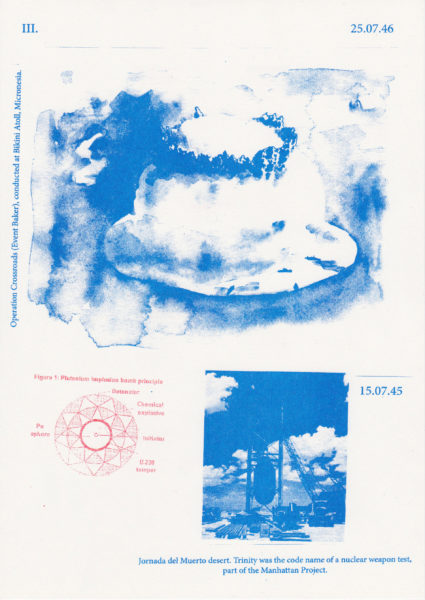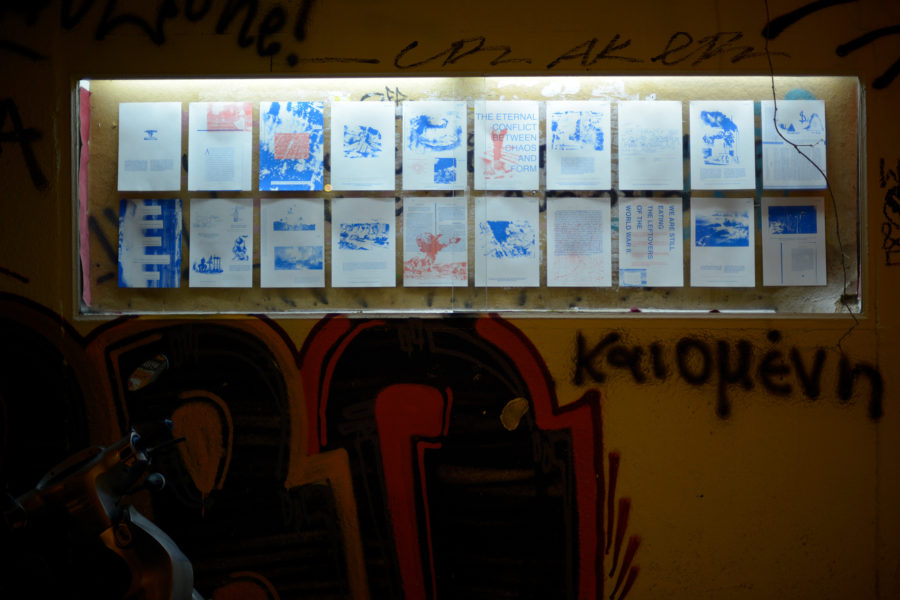The construction of fire and other stories
”when we make a map it is not only a metonymic substitution but also an ethical statement about the world . . . [it] is a political issue.”
— J. B. HarLey, “Cartography, ethics, and social theory”
The construction of fire and other stories (2015) is an edition of 15 copies of 20 risograph prints, that can be viewed as publication or as wall installation. e starting point for this work was to construct an archive of events that involve re and architecture. Fire as of the uncontrollable or the unknown; the mysterious power of the creation of the universe that is still beyond our comprehension. Architecture as of the whole of anthropogenic processes, the ultimate man-made form, that became so dominant that started to change the course of geological forces. e archive is an attempt to document ‘the eternal conict between chaos and form’; mankind’s attempts to recreate the ultimate power, the uncontrollable, the birth of the universe. An observer of the archive might notice that such attempts always come at cost of humanity, a cost that is splendidly manifested in the material environment, architecture and cities, that people have built, driven by the immaterial and unseen infrastructures and forces that constitute the world order, such as economy and (geo)politics.
The work is organized in chapters, but it does not follow a linear, chronological narrative. It aims to highlight the eort to map, dissect and understand information as drawing links between history, theory and philosophy, wondering if there is any absolute reality or just our perception of what happened according to a certain worldview that is constructed for us. inking about the notion of catastrophe for example, what does catastrophe mean anyway? Bachelard wrote, “catastrophe is something more than a change, is a renewal”. Nuclear bombs and spectacular, explosive terrorist acts might be powerful weapons, but, the most powerful of all is to manipulate the mechanisms of perception. Such a weapon could change the future but also the past. “e future perfect is the memory of what is to come.”1
1. Paolo Virno, Dejà Vu and the End of History
-

-

-

Fireworks out of Season —Riviera, curated by Galini Notti, Athens, 2015 (photo: Mariza Nikolaou)